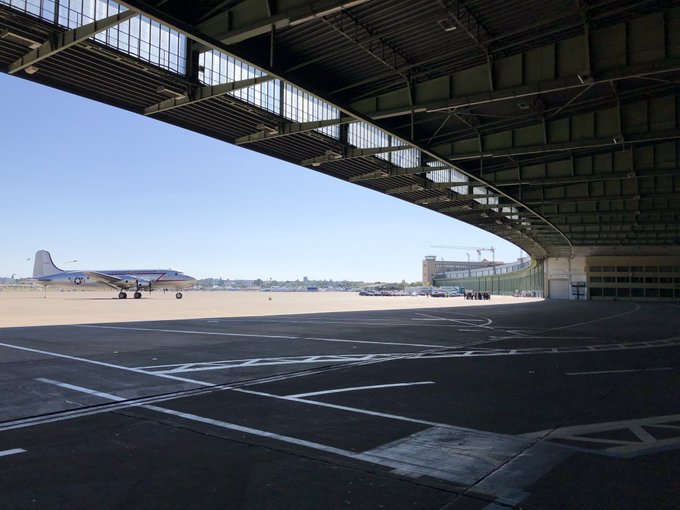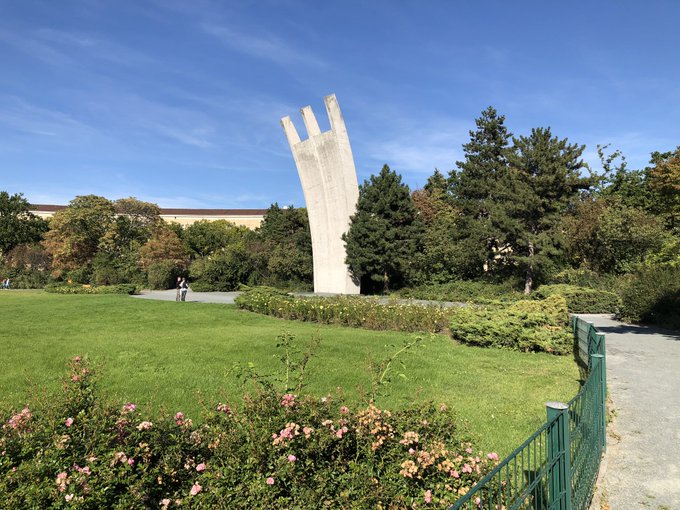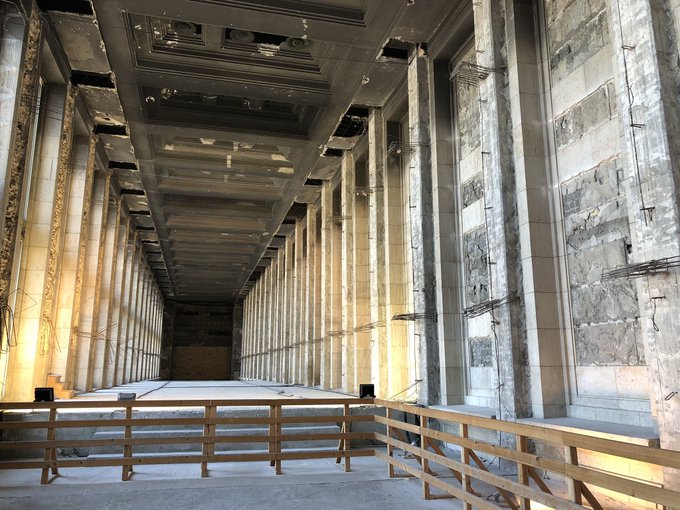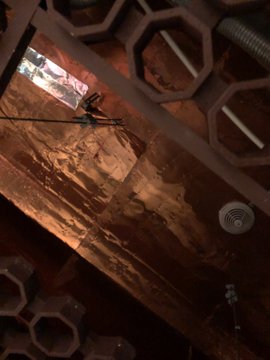September 26, 2019
From September 26, 2019:
Over the weekend, I had the chance to visit Tempelhof, Berlin’s original airport and a very important site in the city’s history.

Even before there was a terminal, Tempelhof Field, located south of Berlin’s city center, was witness to some of the earliest steps in aviation – including a demonstration, in 1909, by the Wright Brothers of their airplane.

Starting in 1933, the new Nazi government made building a massive, modern new terminal at Tempelhof part of their huge infrastructure program to get the German economy going again, and project an impressive international image.

The new terminal, in the shape of an eagle with spreading wings, was the world’s largest building at the time, only to be surpassed by the Pentagon during WW2.

It was the first airport terminal in the world with dedicated boarding gates.

A massive roof covered the boarding gates so that passengers could walk to their planes in the rain without getting wet (the smaller aircraft of the time could fit under the metal awning).

The roof was also designed to serve as an amphitheater for hundreds of thousands of people to watch military parades of aircraft. These towers, all along the terminal’s arch, were built to facilitate their movement, just like in a sports stadium.

Hitler even had his own private boarding gate, complete with a “Fuhrer Elevator”, which he apparently never used.

In fact, Hitler didn’t really like the new Tempelhof terminal, and rarely went there. Its style was way too “modern” for his tastes.




The architect wasn’t Albert Speer, Hitler’s favorite, but Ernst Sagebiel. But Sagebiel did have one important patron who loved his work: Herrmann Goering, who had him design the Nazi Air Ministry, which still stands in central Berlin and now houses Germany’s Finance Ministry.

But Tempelhof Airport (upper left) did serve as a southern anchor and international gateway to Speer’s “Germania”, his massive plan to remake Berlin as an awe-inspiring world capital, after Germany won the war.

People who arrived at Tempelhof would enter upon an immense boulevard leading north past government ministries to a monstrous dome, many times larger than St. Peter’s.

But Tempelhof was never completed before the war interrupted everything. During the war, its huge spaces were converted into assembly lines for fighter and bomber planes, served by slave laborers from concentration camps.

When it was built, however, Tempelhof featured bomb shelters for passengers to seek refuge underground in case of attack.

During the war, these shelters – many of them decorated with humorous cartoons to keep up people’s spirits – were occupied for days on end by local people seeking refuge from Allied bombing raids.

During the Battle of Berlin in 1945, hundreds of people crowded into these shelters designed for a few dozen, with no electricity or water, hiding for days from the rampaging Russian soldiers above.




Above ground, Tempelhof became a battlefield. The ceiling is this corridor is blackened from the fires that broke out during combat. An inscription, scrawled in Russian, reads “Welcome to Hell”.

Following the fall of Berlin, the US Army took over Tempelhof as its main air base in the western occupied sector of the city.

And when West Berlin was blockaded by Soviet forces in 1948, Tempelhof became the lifeline for supplies airlifted in by the Allies to feed and fuel the city.

The Berlin Airlift happened almost by accident, as a way to buy time to decide whether to surrender or go to war. Instead, it ended up being the solution that saved West Berlin from Soviet conquest without a fight.

On their way into Tempelhof, US cargo planes often dropped candy and raisins by parachute to waiting children below, earning them the beloved name “Candy Bombers” from a generation who had only known the terror of real bombing raids.

The names and ranks of the 78 Allied airmen killed in accidents during the often dangerous Berlin Airlift are inscribed on this monument just outside the front entrance of Tempelhof Airport.

Tempelhof remained a US air base until German reunification in 1992, but starting in the 1950s, part of the terminal was reopened to serve as West Berlin’s civilian airport – eventually including the main entrance hall, here:

Air Bourbon must have made for an interesting flight.

Still, the Nazi memory hung heavily over the building. A false ceiling was installed over the entrance foyer to make it less “monumental” and reminiscent of the Third Reich.

The loft above the false ceiling gives some impression of how tall the foyer originally would have been, with (now stripped) marble pillars on all sides. The ceiling is still darkened from fire damage from the 1945 Battle of Berlin.

Above the main entrance hall, Hitler had a ballroom built for high-level Nazi events and receptions. The Americans converted it into a basketball court for their air base at Tempelhof. They also installed a bowling alley.

You can still wander the labyrinth of offices left behind that were part of the former US air base. The entire area is shielded in copper to prevent Soviet electronic snooping.




Tempelhof Airport closed in 2008, as it became too small to operate efficiently. Even Berlin’s Tegel Airport will soon give way to a new and larger airport expected to open in 2020.

In 2015, Tempelhof temporarily became Europe’s largest refugee camp to house people fleeing Syria and other parts of the Middle East.

The refugees are gone, but Tempelhof remains a protected monument to many things: Nazi ambition and folly, the most anxious moments of the Cold War, Candy Bombers bringing food and freedom … and hope.

Leave a Reply